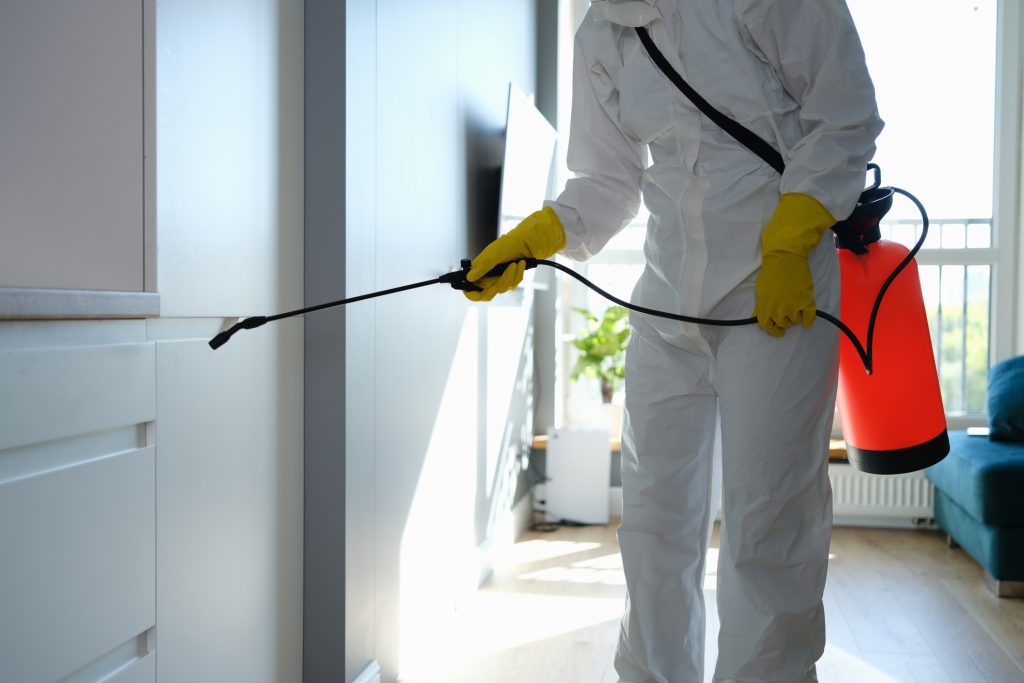Go with expert Pest Control to achieve a pest-free environment.
Eco-Friendly Insect Control Approaches for Taking Care Of Wild Animals in Urban Areas
Urban areas frequently find themselves at the intersection of human task and wild animals, leading to special difficulties in insect management. These approaches not just secure the atmosphere but also enhance area involvement in wildlife management. As city populaces proceed to grow, understanding the dynamics of wildlife communications comes to be increasingly critical.
Recognizing Urban Wildlife Characteristics
Comprehending Urban Wildlife Characteristics is vital for developing reliable and green bug control techniques. Urban locations are progressively becoming environments for various wild animals species, driven by variables such as habitat fragmentation, food schedule, and human infringement. Recognizing these characteristics permits a nuanced strategy to pest management that straightens with ecological concepts.
Urban wild animals frequently consists of species such as raccoons, squirrels, and birds, which adjust to city environments, discovering particular niches in eco-friendly spaces, parks, and even suburbs. Their visibility can result in problems with people, specifically when they make use of personnels for food and sanctuary. Understanding the habits and eco-friendly roles of these varieties informs methods that decrease negative interactions while promoting biodiversity.
Moreover, recognizing the interdependencies within urban ecological communities assists in determining critical areas for habitat conservation and restoration. This understanding contributes to the growth of incorporated pest management (IPM) techniques that think about the environmental equilibrium, therefore reducing reliance on damaging chemicals. By cultivating conjunction between humans and metropolitan wildlife, cities can produce healthier atmospheres that benefit both locals and regional communities, leading the method for sustainable metropolitan living.
Natural Repellents and Deterrents
Natural repellents and deterrents provide a sustainable alternative to conventional parasite control approaches by using the power of nature to maintain undesirable types at bay. These environment-friendly options commonly utilize plant-based active ingredients, important oils, and various other normally taking place compounds that hinder pests without harming the setting.
One reliable all-natural repellent is peppermint oil, which is recognized to repel rodents and bugs. Its solid aroma is unpleasant to lots of parasites, making it a preferred choice for urban settings. Vinegar and citrus peels can offer as deterrents, as their strong odors are commonly unattractive to various wild animals.
Furthermore, diatomaceous planet is an all-natural powder that can be spread in locations prone to parasite activity, effectively drying out and deterring pests without presenting risks to non-target types. Garlic sprays and neem oil are recognized for their capacity to ward off a vast range of parasites, including both bugs and bigger wildlife.
Implementing these all-natural repellents not only lowers reliance on chemical pesticides yet likewise promotes a healthier metropolitan ecosystem, promoting an extra balanced coexistence in between human beings and wildlife. By using these strategies, urban areas can successfully take care of pest populations while lessening ecological impact.
Habitat Adjustment Strategies
Reliable habitat modification methods play a vital role in sustainable insect monitoring by modifying the environment to make it much less helpful to pest problems. By understanding the ecological dynamics of metropolitan areas, homeowner can execute calculated adjustments that hinder parasites while advertising biodiversity.
(Mosquito control Port Charlotte)One key technique includes keeping proper cleanliness. This consists of normal waste removal, protecting garbage containers, and eliminating standing water to decrease reproducing sites for bugs and rats. Additionally, landscaping techniques such as selecting native plants can boost eco-friendly balance, supplying environments for advantageous microorganisms while reducing sources for parasites.
An additional crucial technique is to secure entrance points in buildings. Inspecting and fixing splits in structures, walls, and windows can considerably reduce pest access. Creating physical obstacles, such as fencings or plant buffers, can inhibit wild animals motion into human-inhabited areas.
Integrated Pest Management Practices
Structure upon environment adjustment methods, integrated insect management (IPM) techniques use an all natural technique to managing insect populaces while lessening environmental impact. IPM incorporates numerous methods, including biological, social, mechanical, and chemical controls, to attain reliable bug monitoring.
Organic control entails the intro of all-natural killers or bloodsuckers to reduce insect populaces. Cultural methods, such as plant rotation and sanitation, disrupt pest life process and diminish their habitats - Pest control service. Mechanical controls, like traps and obstacles, offer prompt remedy for bug stress without chemical intervention
Chemical controls check are made use of as a last option, concentrating on targeted applications that restrict injury to non-target species and the atmosphere. The option of environmentally pleasant pesticides, when needed, is essential to the IPM structure. Additionally, monitoring bug populaces and examining possible damage aids notify decision-making, ensuring that interventions are timely and effective.
Area Involvement and Education

(Rat Control)Workshops and educational sessions can outfit residents with expertise regarding indigenous types, environment conservation, and efficient safe pest administration methods. Cooperation with schools, local organizations, and government companies additionally boosts instructional outreach, guaranteeing that necessary details gets to varied target markets.
Moreover, community-led initiatives, such as neighborhood clean-up days and habitat restoration projects, not only promote biodiversity however likewise enhance neighborhood ties. Pest control service. By urging homeowners to share their experiences and monitorings, areas can create targeted strategies that deal with particular local bug concerns
Integrating responses from locals into insect management plans enables an extra receptive and flexible technique to wildlife challenges. Ultimately, educated and involved neighborhoods are essential to achieving lasting success in environmentally friendly pest control, leading to much healthier metropolitan environments that respect both human and eco-friendly requirements.

Conclusion
In conclusion, environmentally friendly bug control comes close to offer sustainable options for taking care of city wild animals. By focusing on environment alteration, utilizing natural repellents, and executing integrated insect administration methods, neighborhoods can promote a harmonious coexistence with regional fauna.